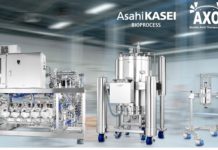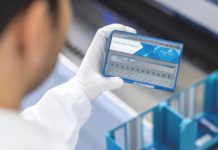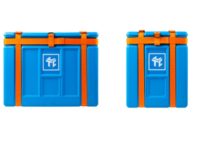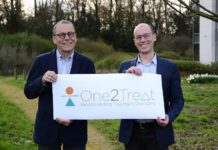Boehringer Ingelheim and Eli Lilly and Company announced that the U.S. Food and Drug Administration (FDA) has approved linagliptin tablets, a prescription medication used along with diet and exercise to lower blood sugar in adults with type 2 diabetes. 1 The FDA has approved linagliptin as a monotherapy or in combination with other commonly prescribed medications for type 2 diabetes—such as metformin, sulphonylurea and pioglitazone — to reduce haemoglobin A1c (HbA1c or A1c) levels by a mean of up to -0.7 percent (compared to placebo). 2 HbA1c is measured in people with diabetes to provide an index of blood sugar control for the previous two to three months. It is used as a marker of efficacy of antihyperglycaemic therapies. Linagliptin belongs to a class of prescription medications called dipeptidyl peptidase-4 (DPP-4) inhibitors and is the first member of its class to be approved at one dosage strength (5 mg, once daily). 1 With linagliptin, no dose adjustment is recommended for patients with kidney or liver impairment. Linagliptin is a tablet that can be taken with or without food. Linagliptin lowers blood sugar in a glucose-dependent manner by increasing incretin levels (GLP-1), which increase insulin levels after meals and throughout the day. 1
“Many people with type 2 diabetes are not able to control their blood sugar with diet and exercise alone and may also require one or more medications,” said John Gerich M.D., Professor of Medicine, University of Rochester School of Medicine. “The FDA approval of linagliptin is exciting because there is only one dose to remember for all patients, regardless of kidney or liver impairment. With linagliptin, physicians will have another option for managing type 2 diabetes, a potentially devastating condition.”
Linagliptin 5mg once daily was approved based on a clinical trial programme which included approximately 4,000 adults with type 2 diabetes. Included in the programme were three placebo-controlled studies evaluating linagliptin as monotherapy and in combination with the commonly prescribed oral antihyperglycaemic medications metformin and suphonylurea. Linagliptin showed statistically significant mean difference in HbA1c from placebo of up to -0.7 2 percent when used as monotherapy In patients who were not adequately controlled on metformin or metformin plus sulphonylurea, the addition of linagliptin resulted in a statistically significant mean difference in HbA1c from placebo of -0.6 percent. 3-4
In a fourth study, the initial combination of linagliptin and pioglitazone was compared with pioglitazone alone. 5 The difference in the adjusted mean HbA1c between the linagliptin and placebo groups was -0.5% (p<0.0001). 5 For patients taking linagliptin plus pioglitazone, mean HbA1c change from baseline was -1.1 percent compared to a change of -0.6 percent for patients taking pioglitazone alone (p < 0.0001). 5
Treatment with linagliptin also produced significant reductions in fasting plasma glucose (FPG) compared to placebo, when used as monotherapy and in combination with metformin, sulfonylurea and/or pioglitazone. 2-3, 5-6 Treatment with linagliptin produced significant reductions in two-hour post-prandial glucose (PPG) levels compared with placebo as monotherapy 2 and when used in combination with metformin. 3 FPG is used to determine glucose levels in a fasting state (usually upon wakening in the morning), and PPG is used to determine glucose levels after meals (usually two hours after eating).
In controlled studies, change from baseline in body weight did not differ significantly between groups when linagliptin was administered as monotherapy, 2 in combination with metformin 3 or in combination with metformin plus sulphonylurea. 4 Patients treated with linagliptin exhibited a significant mean decrease from baseline body weight compared to a significant weight gain in patients administered sulphonylurea (-1.1 kg vs. +1.4 kg. p<0.0001). 1 Patient weight increased in both the linagliptin plus pioglitazone and placebo plus pioglitazone groups during the study with an adjusted mean change from baseline of 2.3 kg and 1.2 kg, respectively. (p=0.0141). 1
“Type 2 diabetes is increasing at an alarming rate and we are proud to offer people in the United States a new treatment option from our Boehringer Ingelheim research laboratories that could potentially help the millions of patients with type 2 diabetes whose blood sugar is not adequately controlled,” said Prof. Klaus Dugi, Corporate Senior Vice President Medicine, Boehringer Ingelheim. “When we introduce a new medicine, our goal is to improve patient care and we are confident that linagliptin will help to achieve that.”
Adverse reactions reported in greater than or equal to five percent of patients treated with linagliptin and more commonly than in patients treated with placebo included nasopharyngitis. 1 Hypoglycaemia was more commonly reported in patients treated with the combination of linagliptin and sulfonylurea compared with those treated with the combination of placebo and sulfonylurea. 1 The incidence of hypoglycaemia was similar to placebo when linagliptin was administered as monotherapy or in combination with metformin or pioglitazone. 1 Pancreatitis was reported more often in patients randomized to linagliptin (one per 538 person years versus zero in 433 person-years for comparator).
Linagliptin should not be used in patients with type 1 diabetes or for the treatment of diabetic ketoacidosis (increased ketones in the blood or urine). It has not been studied in combination with insulin. 1
The FDA approval of linagliptin marks the first regulatory milestone since the formation of the Boehringer Ingelheim and Eli Lilly and Company worldwide diabetes alliance in January 2011. The alliance leverages the collective scientific expertise and business capabilities of two leading research-driven pharmaceutical companies to address patient needs arising from the growing global diabetes epidemic.
“Our alliance with Boehringer Ingelheim represents one of the most robust diabetes pipelines in the pharmaceutical industry,” said Enrique Conterno, President of Lilly Diabetes. “Linagliptin is the first regulatory approval of what we hope will be many new treatment options this alliance brings to the millions of people living with type 2 diabetes.”
The overall clinical development programme for linagliptin tablets consists of 30 studies completed, underway or planned. Linagliptin is currently under regulatory review in the EU and Japan.
About Diabetes
Approximately 25.8 million Americans 7 and an estimated 220 million people worldwide 8 have type 1 and type 2 diabetes. Type 2 diabetes is the most common type, accounting for an estimated 95 percent of all diabetes cases. Diabetes is a chronic disease that occurs when the body either does not properly produce, or use, the hormone insulin. 9
Boehringer Ingelheim and Eli Lilly and Company
In January 2011, Boehringer Ingelheim and Eli Lilly and Company announced an alliance in the field of diabetes that centres on four pipeline compounds representing several of the largest treatment classes. This alliance leverages the companies’ strengths as two of the world’s leading pharmaceutical companies, combining Boehringer Ingelheim’s solid track record of research-driven innovation and Lilly’s innovative research, experience, and pioneering history in diabetes. By joining forces, the companies demonstrate commitment in the care of patients with diabetes and stand together to focus on patient needs. Find out more about the alliance at www.boehringer-ingelheim.com or www.lilly.com.
About Boehringer Ingelheim
The Boehringer Ingelheim group is one of the world’s 20 leading pharmaceutical companies. Headquartered in Ingelheim, Germany, it operates globally with 145 affiliates and more than 42,000 employees. Since it was founded in 1885, the family-owned company has been committed to researching, developing, manufacturing and marketing novel products of high therapeutic value for human and veterinary medicine.
As a central element of its culture, Boehringer Ingelheim pledges to act socially responsible. Involvement in social projects, caring for employees and their families, and providing equal opportunities for all employees form the foundation of the global operations. Mutual cooperation and respect, as well as environmental protection and sustainability are intrinsic factors in all of Boehringer Ingelheim’s endeavors.
In 2010, Boehringer Ingelheim posted net sales of about 12.6 billion euro while spending almost 24% of net sales in its largest business segment Prescription Medicines on research and development.
For more information please visit www.boehringer-ingelheim.com
About Eli Lilly and Company
Lilly, a leading innovation-driven corporation, is developing a growing portfolio of pharmaceutical products by applying the latest research from its own worldwide laboratories and from collaborations with eminent scientific organizations. Headquartered in Indianapolis, IN, Lilly provides answers – through medicines and information – for some of the world’s most urgent medical needs. Additional information about Lilly is available at www.lilly.com.
About Lilly Diabetes
For more than 85 years, Lilly has been a worldwide leader in pioneering industry-leading solutions to support people living with and treating diabetes. Lilly introduced the world’s first commercial insulin in 1923, and remains at the forefront of medical and delivery device innovation to manage diabetes. Lilly is also committed to providing solutions beyond therapy – practical tools, education, and support programmes to help overcome barriers to success along the diabetes journey. At Lilly, the journeys of each person living with or treating diabetes inspire ours. For more information, visit www.lillydiabetes.com.


























